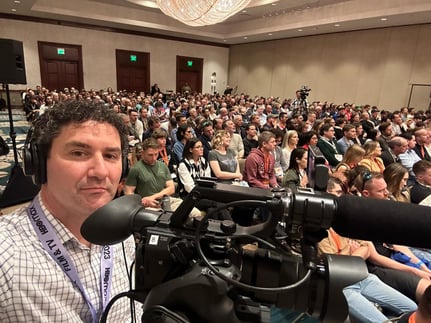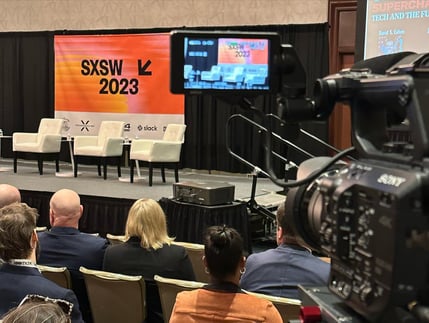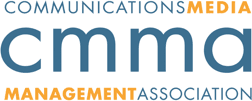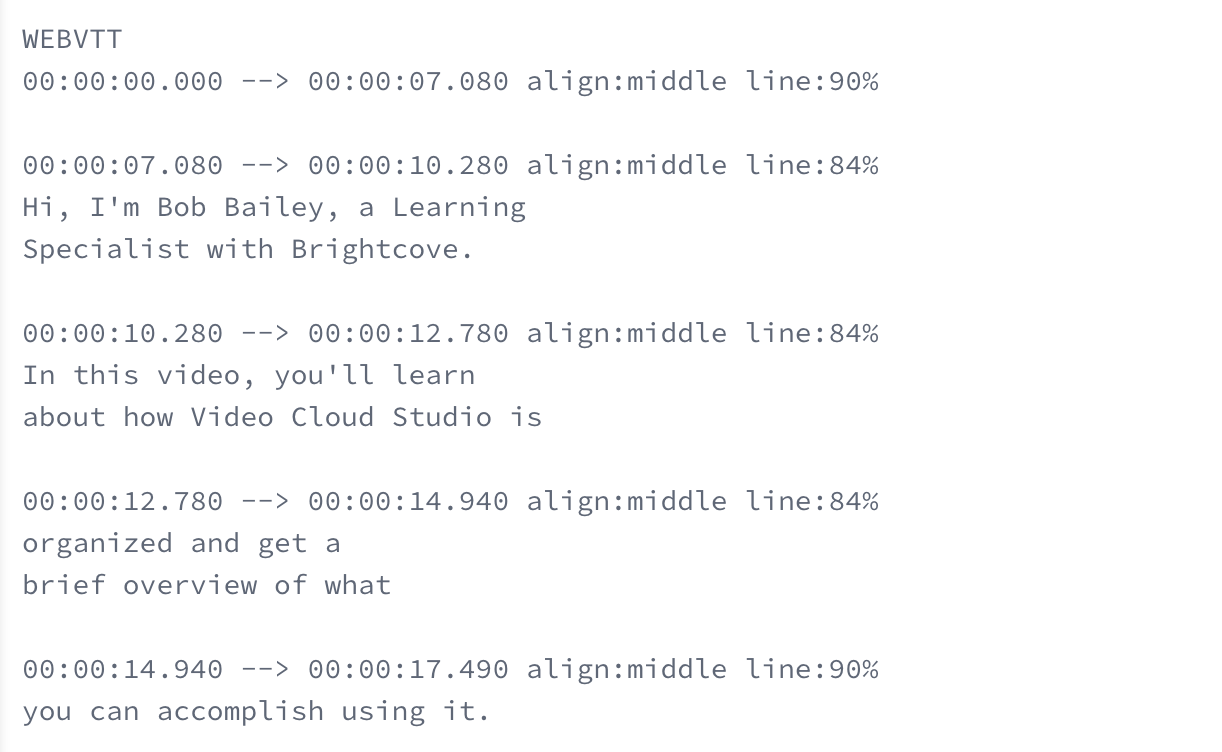I knew
(SXSW) was going to be different. The schedule revealed the normal offerings you’d expect: keynotes by such people as the humanitarian chef Jose Andres, Ryan Gellert of Patagonia, and the actor Tilda Swinton, panel discussions about technology and filmmaking, and networking happy hours sponsored by companies such as Edelman, Vimeo, and L’oreal (among hundreds of others). But a deeper exploration revealed that this is not your standard conference. Signs on the convention center floor heralded panel discussions on “tracks” such as Workplace Revolution, Psychedelics, Energy, and the Media Industry. There were fascinating talks on topics ranging from corporate diversity and culture (at the German House) to virtual production on LED-wall sound stages (at the Australia House.)
At the Creative Industries Expo on the main convention center floor, a twenty-five foot holographic dancer lorded over us all, standing next to a booth touting a development service for screenwriters, which was next to a booth designed to showcase new technologies and recruit for the CIA.
A five-minute walk from the Expo led you to a huge 3D Dorito which infused your nostrils with Cool Ranch (really), and another ten-minute walk from that led to a warehouse with a full-on immersive experience based on Showtime’s hit show Yellowjackets, complete with hors d’oeuvres that were definitely not made from people.
The Convergence of Tech with All Things Creative
Officially, South-by (as the cool kids call it) is a festival that celebrates the convergence of tech, film, music, education, and culture – and I can tell you firsthand that it delivers on that celebration. I’ve been to film festivals and film markets and business events and trade shows and tech conferences, but I’ve never experienced all of them in one city with one pass within 5 days.
It was, quite literally, overwhelming. Seeing and hearing and experiencing everything proved to be an impossible task, and my only suggestion for next year is that they incorporate a cloning booth so one can attend everything simultaneously. (Although I hear that might be on the slate…)
What I was able to see, however, was informative and inspiring. The Expo, especially, proved to be much more engaging than a standard industry floor, due to the sheer breadth of products and services and technologies on display from every industry. The panels were – as you would expect from presenters of this level – well worth the time.
This is how we roll
One panel in particular sticks out, because I actually ended up being one of the camera operators at the last minute. This panel was being presented by a potential client with whom I was chatting, and – after describing our services – they mentioned that one of their camera operators had backed out at the last minute for a panel that day, so they could have used us. Given that I have spent years working for TeamPeople as a camera operator filming panels and conferences, I volunteered to fill in and run his 2nd camera (at no charge…) – and their relief was palpable. They were also pleasantly surprised to see that even the people we have on the ground at a festival and conference are able to operate cameras on a moment’s notice…which is just how we roll over here.


It All Comes Down to Storytelling
I found myself engaged in some fascinating conversations – about technology, media, finance, or just life in general – with some of the smartest people I’ve ever met. I met brilliant filmmakers, ingenious designers, savvy financiers, and entrepreneurs who are re-inventing drone taxis or redefining the travel industry or creating new products for immersive virtual meetings.
One of those entrepreneurs with a fascinating story is Alexandra Schrecengost, friend of TeamPeople and Founder and CEO of
, a relatively young company which offers virtual and hybrid team experiences for business. Alex was named as a 40 under 40 Tastemaker by Wine Spectator in 2021, and she was invited to be a private mentor for people who were interested in learning more about Diversity, Equity, and Inclusion as it applies to Entrepreneurship. As a diverse business owner and accomplished entrepreneur, there are few people more suitable to mentor on that topic. The opportunity to meet with people like Alex was yet another interesting offer from the festival, and also stands as a testament to the wonderful diversity on hand at SXSW.
Given TeamPeople’s focus as a service for companies needing creative roles and production, it was interesting to be exposed to so many other types of companies and ventures, and I found myself pleasantly surprised by just how much there is to celebrate in the convergence of all of these industries. By the end of my time at SXSW, I came to understand why this is the case, and why SXSW works:
It’s because – at the end of the day – the entire conference is about storytelling. Everyone in attendance has a story to tell, whether it’s about a new trend or a revolutionary product or (in the case of filmmakers) a literal story. A festival like this just drives home the point that the singular thing that makes us human is our need to tell and hear these stories. I was thrilled to be at an event that celebrates this in such a fun and delightful way, and I got the sense that many of my fellow storytellers and story-lovers shared that same sense of joy.
A Celebration of Humanity
I also found myself incredibly grateful to be part of an industry, and a company in TeamPeople, whose purpose is to celebrate this part of our humanity. It’s easy to fall into cynicism, and to only see the business and capital and competition at a festival like this, but a bit of digging and some late-night conversations will reveal a diverse, thoughtful community of people who all just want to tell and share each other’s stories.
It was enlightening, empowering, and fun, and I’m very much looking forward to returning next year.
Are you looking to share your story? Whether you are sharing entertainment, news, documentaries, educational or corporate video content, we know the people and the processes to get the job done right. We have talented teams deeply ingrained in the storytelling community who can help convey your message, and rosters of production vendors to bring your story to life.
– we’d love to hear about your story!




